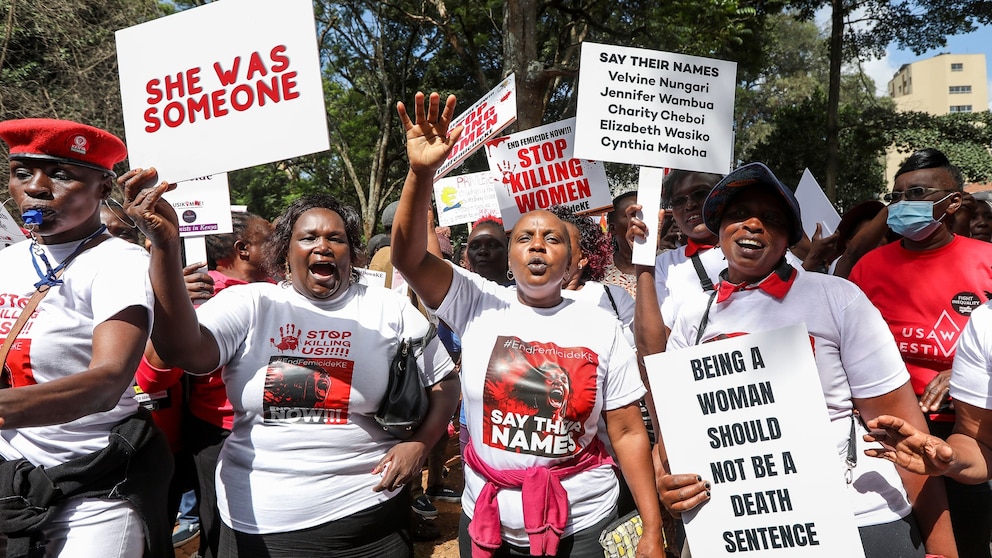Femicide: Understanding The Rise In Incidents

Table of Contents
Defining Femicide and its Distinguishing Features
Femicide, the killing of women because they are women, is a distinct form of gender-based violence. It’s crucial to differentiate femicide from other forms of homicide; it's not merely a statistic but a targeted act driven by gender inequality and patriarchal structures. The gendered nature of the crime is paramount; the victim's gender is the primary motive.
- Types of Femicide: Femicide encompasses various forms, including intimate partner femicide (killing by a current or former partner), femicide linked to honor killings (murders committed to uphold perceived family honor), and femicide resulting from other forms of gender-based violence.
- Motivation: The motivation behind femicide often stems from a desire for control, dominance, and punishment for perceived transgressions against patriarchal norms. It's a brutal expression of power imbalance.
- Prevalence: Femicide rates vary significantly across regions, often correlating with socio-economic factors, levels of gender inequality, and the strength of legal frameworks protecting women. Regions with deeply entrenched patriarchal norms and weak legal systems tend to report higher rates of femicide.
Contributing Factors to the Rise in Femicide
The increase in femicide is a complex issue rooted in a confluence of social, cultural, and economic factors. Understanding these intertwined elements is crucial to addressing the problem effectively.
- Harmful Gender Norms and Stereotypes: Societal norms that perpetuate gender inequality, such as the normalization of male dominance and female subordination, create an environment conducive to violence against women. These norms often justify or excuse violence against women.
- Weak Legal Frameworks and Lack of Enforcement: Inadequate laws, poor enforcement, and lack of accountability for perpetrators contribute significantly to the rise of femicide. Weak legal protection emboldens offenders.
- Poverty, Inequality, and Lack of Access to Resources: Socio-economic disparities exacerbate the vulnerability of women, making them more susceptible to violence. Lack of access to education, employment, and economic independence increases their dependence on potentially abusive partners.
- Normalization of Violence Against Women: The normalization of violence against women in certain cultures and communities desensitizes society to its severity, hindering efforts to prevent and address it. This creates a climate of acceptance for violence.
- Alcohol and Substance Abuse: Alcohol and substance abuse frequently contribute to escalating conflicts and violence, increasing the risk of femicide in many instances. It acts as an exacerbating factor.
The Impact of Femicide on Individuals and Society
The impact of femicide extends far beyond the immediate victim; it leaves a devastating ripple effect on families, communities, and society as a whole.
- Emotional Trauma and Psychological Impact: Survivors, including children and family members, experience profound emotional trauma, grief, and psychological distress. This can lead to long-term mental health issues.
- Economic Burden: The loss of a woman’s economic contribution places a significant burden on families and society. This includes lost income, increased childcare costs, and the costs associated with mental health treatment.
- Erosion of Social Trust and Stability: Femicide erodes social trust, destabilizes communities, and creates a climate of fear. The sense of safety and security is profoundly diminished.
- Normalization of Violence: The persistent occurrence of femicide contributes to the normalization of violence in society, perpetuating a cycle of violence and abuse.
Strategies for Preventing and Addressing Femicide
Combating femicide requires a multi-pronged approach that engages individuals, communities, and governments in collaborative efforts.
- Strengthening Legal Frameworks and Enforcement: Robust laws criminalizing violence against women, coupled with effective enforcement, are crucial for deterring perpetrators and ensuring justice for victims.
- Comprehensive Awareness Campaigns: Raising public awareness about femicide and its devastating consequences is essential to challenging harmful norms and fostering a culture of respect and gender equality.
- Support Services for Survivors and their Families: Providing comprehensive support services, including counseling, legal aid, and shelter, is vital for assisting survivors to rebuild their lives.
- Promoting Gender Equality and Challenging Harmful Norms: Addressing the root causes of femicide requires a sustained commitment to promoting gender equality through education, advocacy, and societal change.
- Investing in Education and Empowerment Programs for Women: Empowering women through education, economic opportunities, and access to resources increases their independence and reduces their vulnerability to violence.
- Improving Data Collection and Research on Femicide: Accurate and reliable data collection is crucial for understanding the scope of the problem, identifying high-risk areas, and evaluating the effectiveness of prevention strategies.
Conclusion
The rise in femicide is a stark reflection of persistent gender inequality and violence against women. Understanding the complex interplay of contributing factors—from harmful gender norms to weak legal frameworks—is paramount. Effective prevention requires a multifaceted approach encompassing stronger legal protections, comprehensive awareness campaigns, support services for survivors, and a concerted effort to promote gender equality. We all have a responsibility to challenge harmful gender norms, support survivors, and demand stronger legal protections against violence against women. Learn more about femicide prevention initiatives in your area and join the fight to end femicide. Let’s work together to create a world free from gender-based violence and ensure the safety and dignity of all women.

Featured Posts
-
 D Wave Quantum Qbts Stock Market Movement A Comprehensive Overview
May 21, 2025
D Wave Quantum Qbts Stock Market Movement A Comprehensive Overview
May 21, 2025 -
 New Baby For Peppa Pig See The Gender Reveal
May 21, 2025
New Baby For Peppa Pig See The Gender Reveal
May 21, 2025 -
 Is Drier Weather Finally In Sight Your Regional Forecast
May 21, 2025
Is Drier Weather Finally In Sight Your Regional Forecast
May 21, 2025 -
 Peppa Pigs Cinema Event 10 Episodes Featuring Baby This May
May 21, 2025
Peppa Pigs Cinema Event 10 Episodes Featuring Baby This May
May 21, 2025 -
 Ryanair Ceo Highlights Tariff Wars As Primary Growth Risk Details Buyback Program
May 21, 2025
Ryanair Ceo Highlights Tariff Wars As Primary Growth Risk Details Buyback Program
May 21, 2025
Latest Posts
-
 Breite Ton Efimereyonta Giatro Sas Stin Patra 12 13 Aprilioy
May 21, 2025
Breite Ton Efimereyonta Giatro Sas Stin Patra 12 13 Aprilioy
May 21, 2025 -
 Giorgos Giakoumakis Diminished Mls Transfer Value A Detailed Analysis
May 21, 2025
Giorgos Giakoumakis Diminished Mls Transfer Value A Detailed Analysis
May 21, 2025 -
 I Xronia Kakodaimonia Ton Sidirodromon Stin Ellada Aities Kai Lyseis
May 21, 2025
I Xronia Kakodaimonia Ton Sidirodromon Stin Ellada Aities Kai Lyseis
May 21, 2025 -
 Efimeries Giatron Stin Patra Savvatokyriako 12 And 13 Aprilioy
May 21, 2025
Efimeries Giatron Stin Patra Savvatokyriako 12 And 13 Aprilioy
May 21, 2025 -
 Eksereynontas To Oropedio Evdomos Tin Protomagia
May 21, 2025
Eksereynontas To Oropedio Evdomos Tin Protomagia
May 21, 2025
